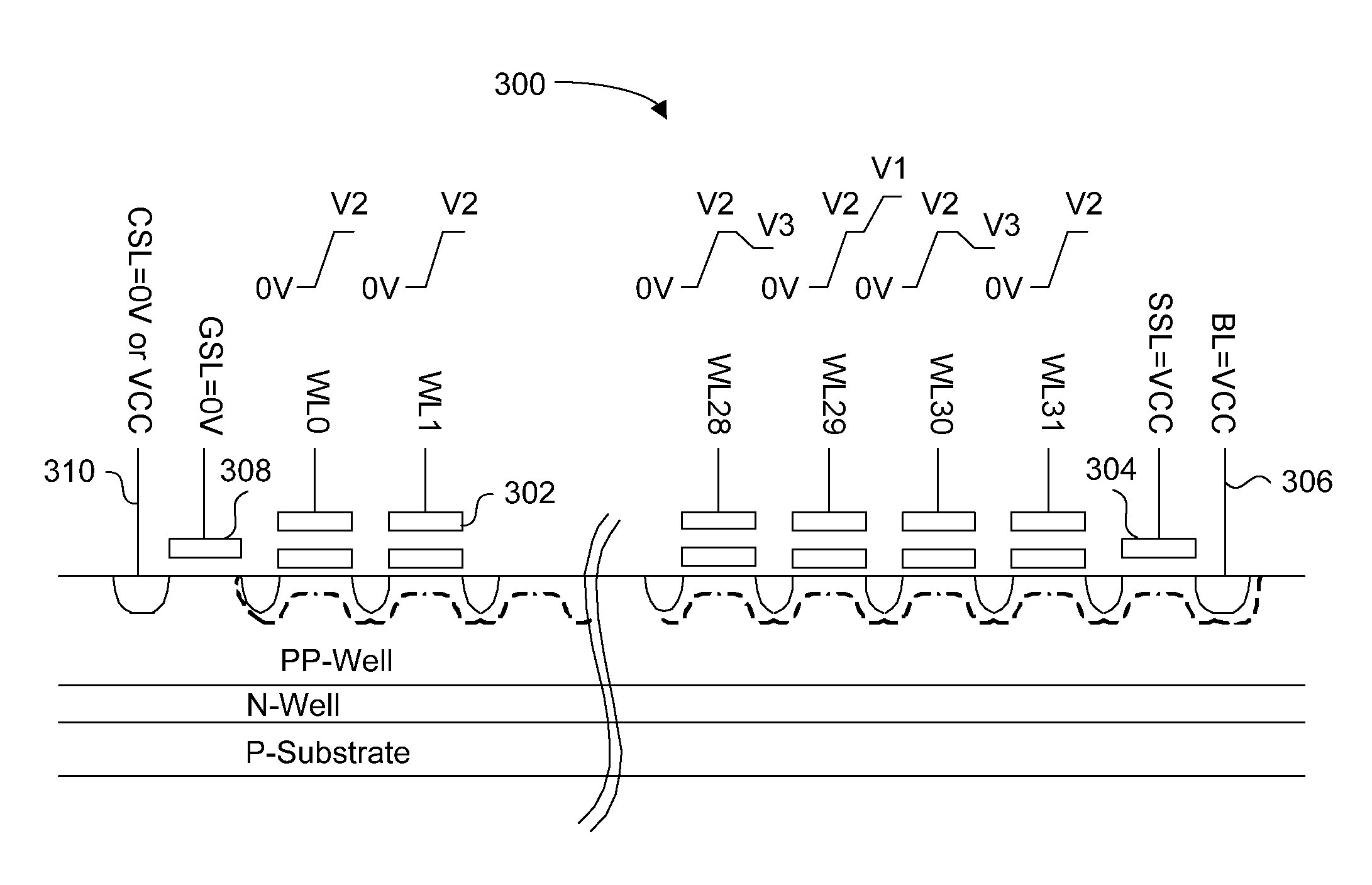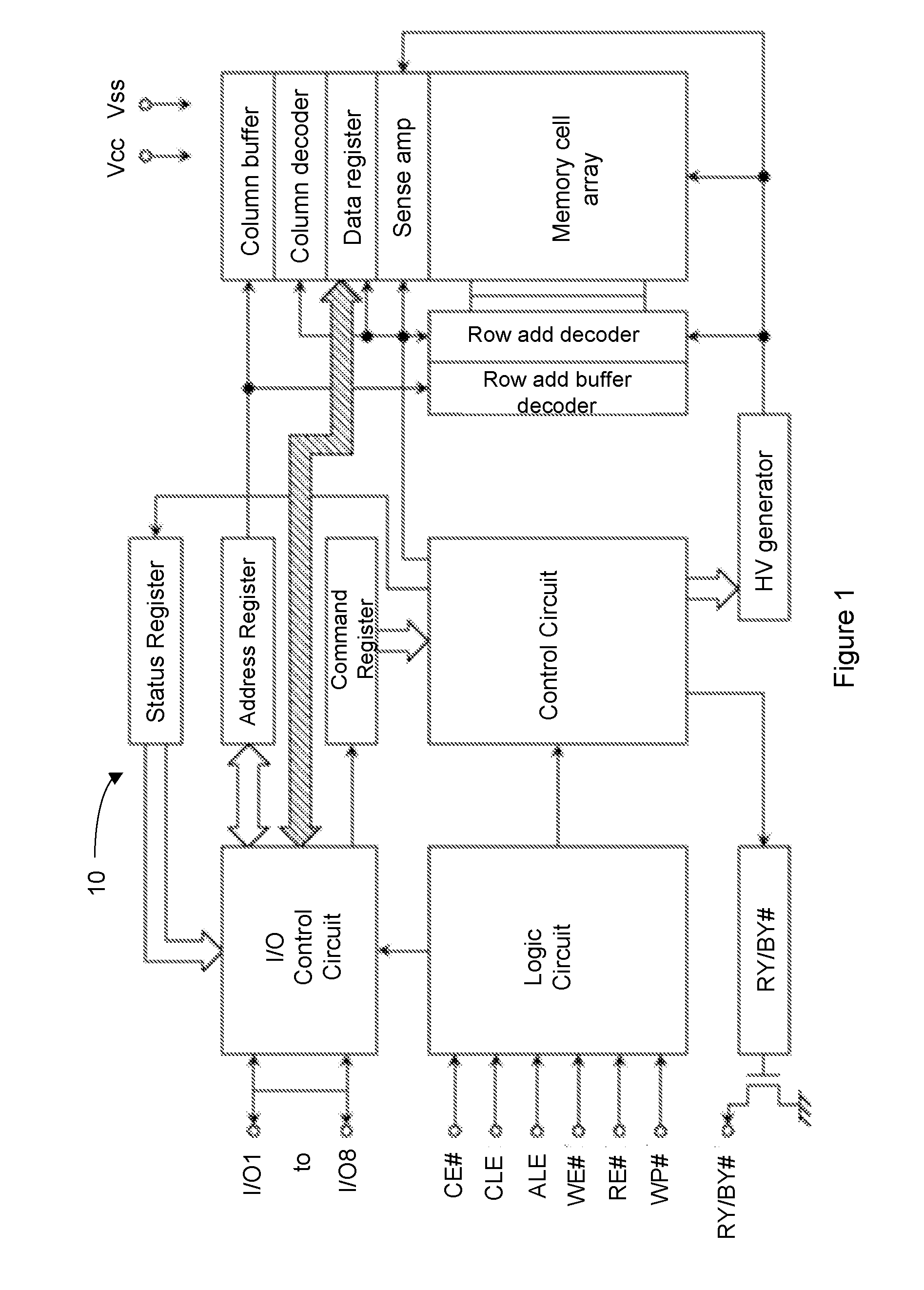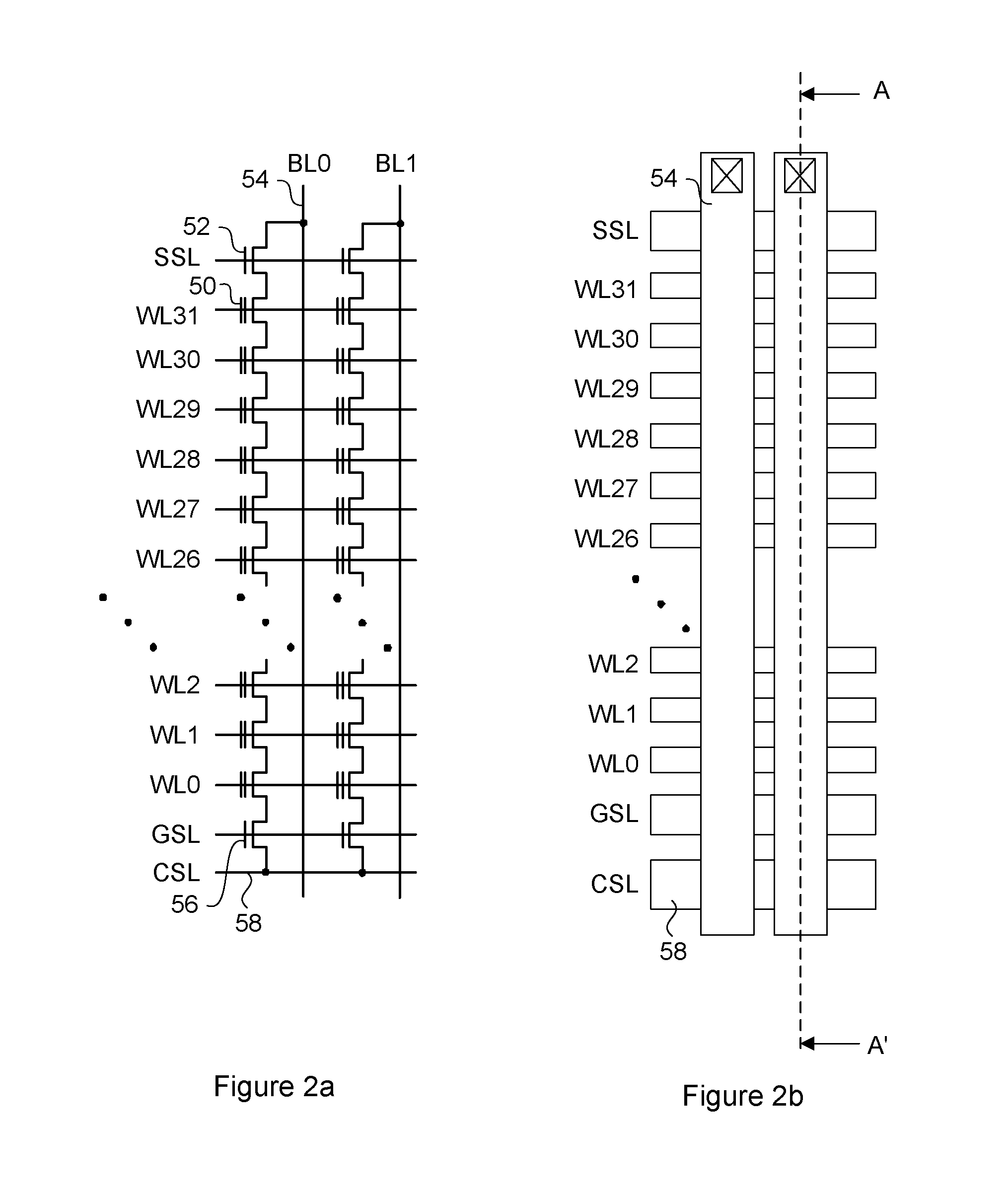Flash memory program inhibit scheme
a flash memory and programming scheme technology, applied in static storage, digital storage, instruments, etc., can solve the problems of limiting the selection to non-volatile forms of memory, affecting the f-n tunneling of unselected cells, and the threshold voltage of erased memory cells will be unintentionally changed, so as to achieve the effect of minimizing the disturbance of the pass ra
- Summary
- Abstract
- Description
- Claims
- Application Information
AI Technical Summary
Benefits of technology
Problems solved by technology
Method used
Image
Examples
Embodiment Construction
[0051]Generally, the present invention provides a method and system for minimizing program disturb in Flash memories. To reduce program disturb in a NAND Flash memory cell string where no programming from the erased state is desired, a local boosted channel inhibit scheme is used. In the local boosted channel inhibit scheme, the selected memory cell in a NAND string where no programming is desired, is locally decoupled from the other cells in the NAND string. This allows the channel of the decoupled cell to be locally boosted to a voltage level sufficient for inhibiting F-N tunneling when the corresponding wordline is raised to a programming voltage. Due to the high boosting efficiency, the pass voltage applied to the gates of the remaining memory cells in the NAND string can be reduced relative to prior art schemes, thereby minimizing program disturb while allowing for random page programming.
[0052]FIG. 5 is a flow chart illustrating a general program inhibit method according to an...
PUM
 Login to View More
Login to View More Abstract
Description
Claims
Application Information
 Login to View More
Login to View More - R&D
- Intellectual Property
- Life Sciences
- Materials
- Tech Scout
- Unparalleled Data Quality
- Higher Quality Content
- 60% Fewer Hallucinations
Browse by: Latest US Patents, China's latest patents, Technical Efficacy Thesaurus, Application Domain, Technology Topic, Popular Technical Reports.
© 2025 PatSnap. All rights reserved.Legal|Privacy policy|Modern Slavery Act Transparency Statement|Sitemap|About US| Contact US: help@patsnap.com



